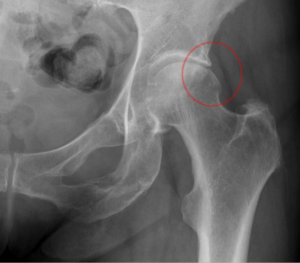
The goal of Femoroacetabular Impingement Surgery is to clean out and trim down the cartilage and protruding bony edges that cause pain and discomfort in the hip.
What is it?
Within the ball and socket hip joint, there is cartilage called the labrum that lines the acetabulum (socket) where the femoral head (ball) fits into place. Sometimes this cartilage gets destroyed or worn down which causes the femoral head to rub on the acetabulum. This causes pain and discomfort and if not treated, can lead to even further hip damage. The femoral head could also have a bump of extra bone that rubs against the acetabulum, or the acetabulum could be rigid in nature. This would all trigger pain and distress. During Femoroacetabular Impingement Surgery, the surgeon will try to relief the cause of pain by shaving down the femoral head, repairing the labrum, or smoothing down the acetabulum.
What should I do to prepare?
Preparing for any surgery can be stressful. It is best to understand and talk with your doctor about what will happen during the surgery and what to expect after it is complete. Having a family member or close friend with you the day of surgery can help alleviate some stress. Scans and preoperative testing will be conducted to determine the best approach to remove the damaged labrum or smooth down the bone in the hip. A patient should not eat or drink after the midnight before surgery. Crutches and walkers will be recommended for weeks following the surgery to let the bone heal. This may require time off from work and other physical activities.
What happens during the process?
Femoroacetabular Impingement Surgery is typically done using an arthroscope with minimal incisions. If the damage to the hip is extensive, the surgeon might need to perform an open surgery, which requires larger incisions. Depending on what the particular issue is, the surgeon will remove the damaged labrum, shave down the bump on the femoral head, or smooth the acetabulum. This will allow more room for the femoral head to move without causing pain. The surgeon will then close the incisions made and take the patient out to recovery. Crutches, a walker, or wheelchair will need to be used for weeks following the surgery to keep weight off of the hip.
What are the risks and possible complications?
Any surgery involving bones, muscles, or tendons will pose a risk for re-injury or injury to another part of the surrounding area. Infections, bleeding, and loss of function are possible with this surgery. There is the possibility that more problems can arise after surgery because not all damage can be fixed with surgery. There is also the chance that there will be damage to blood vessels and nerves in the leg and hip.
Disclaimer:
All GlobeHealer Site content, including graphics, images, logos, and text, among other materials on the site are only for education purposes. This content is not intended to be a substitute for professional medical advice, and you should always contact your physician or qualified health provider for information regarding your health. Information on this site regarding the overview, diagnosis, and treatment of any kind should be looked at, in addition to the advice and information of your health care professional. Do not disregard medical advice or delay seeking treatment or medical advice due to information found on the GlobeHealer site.
If there is even the possibility that you may have a medical emergency, seek treatment, call your doctor, or call your local emergency telephone number immediately. GlobeHealer does not endorse being the first line of communication in case of emergency and does not endorse any specific test, physician, facility, product, procedure, opinion, or other information that is or may be mentioned on this site or affiliated entities. Reliance of any and all information provided by GlobeHealer, its employees, affiliations, others appearing on the Site under the invitation of GlobeHealer, or visitors of the site is solely at your own risk and is not the responsibility of GlobeHealer.
Image Source:
